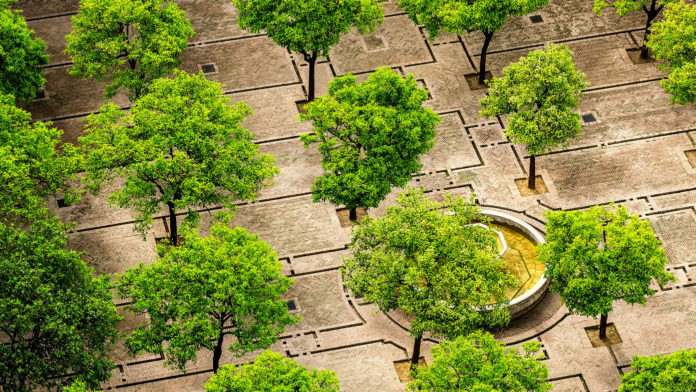I grew up in Vancouver and I’m all too familiar with the torrential storms, where the rain seemed to fall sideways. Choosing the best time and best routes to dash through the downpour were essential skills to avoid getting drenched by the wind and rain. It turns out that there really are street characteristics that change the way pedestrians experience weather.
Marco Giometto, postdoctoral fellow in civil engineering at the University of British Columbia, used computer simulations to show that even a single tree can affect city weather. Beyond the psychological and health benefits of green spaces, urban trees help moderate wind speeds.
Giometto built a computer model of a Vancouver neighbourhood, all the way down to every tree, plant, and building. He simulated historical weather to validate his model against a decade of real world measurements for the same neighbourhood.
Once validated, Giometto was able to make predictions using his model. He calculated that removing all the trees doubled wind speeds through the streets. This is enough to make a noticeable difference: while a 30 km/h wind makes for a challenging walk, a 15 km/h wind would be a pleasant breeze for a pedestrian.
The loss of even a single tree was enough to drive up local wind speeds.
Computer simulation of air flow in a Vancouver neighbourhood demonstrates how trees help moderate wind speeds on urban streets.
Credit: University of British Columbia.
Even when they lose their leaves, trees have the same impact on street-level wind speed. They do this by acting as a momentum sink for air flow, but they also reduce downward transport of high momentum air overhead, making winds less intense at heights where people spend time outdoors.
For people who prefer to avoid the outdoors altogether in bad weather, trees also saved energy costs for neighbourhood buildings. The effect was especially pronounced in the wind pressures in the small gaps between buildings.
“Wind pressure is responsible for as much as a third of a building’s energy consumption,” said Giometto in a statement. “Using our model, we found that removing all the trees around buildings drove up the building’s energy consumption by as much as 10 per cent in winter and 15 per cent in summer.”
These important insights into how trees impact wind in the spaces where we live may help establish new standards for city planning, keeping citizens more comfortable in any weather.










































